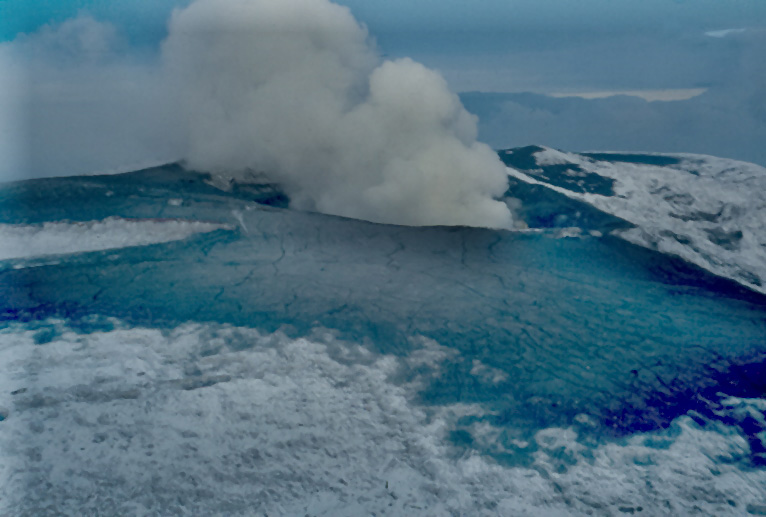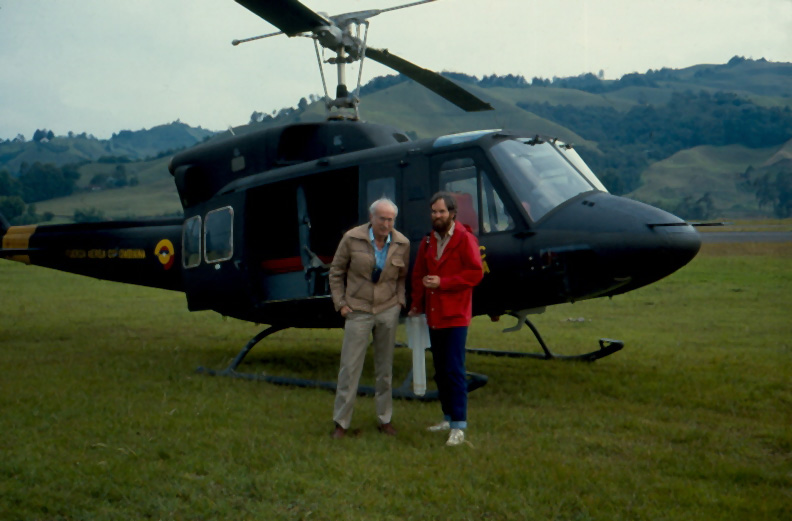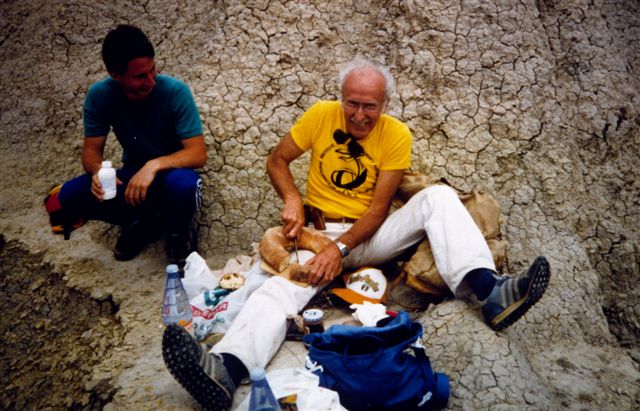Herman Verstappen#
RESEARCH ACTIVITIES, EXPEDITIONS AND CONSULTING#
Particularly the years 1949-1959 were marked by extensive field investigations in many parts of Indonesia. Living for months in the jungle, climbing volcanoes and traversing high mountain ranges suited him as an outdoor man and aroused his scientific curiosity. Following research on coastal evolution and coral reefs in Jakarta Bay
 and other localities in Java, he explored the Wissellakes area
in Central New Guinea (1949), Sumatra
and other localities in Java, he explored the Wissellakes area
in Central New Guinea (1949), Sumatra  (5x in 1950, 1954 and 1955),
the Moluccas
(5x in 1950, 1954 and 1955),
the Moluccas  (1956), the Birdshead of New Guinea
(1956), the Birdshead of New Guinea  and the adjacent
Radjah Empat islands
and the adjacent
Radjah Empat islands  (1958) and took part in the Star Mountains
Expedition in the Central Range that same island (6 months,1959).
This work resulted in numerous publications, including two books,
on the landforms of Sumatra (1964) and of the whole country(2000).
(1958) and took part in the Star Mountains
Expedition in the Central Range that same island (6 months,1959).
This work resulted in numerous publications, including two books,
on the landforms of Sumatra (1964) and of the whole country(2000).
The research related to lowlands and reefs, raised coral reefs, volcanoes, tropical karst, coastal dunes etc. Two major lines of research gradually emerged, however. First, the interaction of climatic/neotectonic factors in landform evolution in Indonesia and in SE Asia at large. He revealed the effects of interannual variations of the monsoons already in his doctor's dissertation and extended this in later years to much larger variations during the Pleistocene. He also found that neotectonism in plate contact zones leads to processes and developments that differ essentially from that known from cratogene areas in humid tropical and savanna conditions.
A second major line of research soon became applied geomorphology of which he became a leading scientist. The fact that squatters were living on his doorstep in Jakarta prevented him from only concentrating on coral reefs and other fascinating geomorphologic subjects and prompted him in 1956 to request a Commission Applied Geomorphology of the International Geographical Union (IGU). Applied research was carried out in relation to pioneer settlement land use planning and environment, resource assessment, natural hazard zoning, etc.
These investigations in the humid tropics were followed by arid zone research in the 1960s and 1970s. Surveys in the context of UNESCO's Arid Zone Programme were carried out during missions in Pakistan (Quetta/LasBela 1964-1965) and in India (CAZRI Jodhpur/ Thar Desert, 1967). The central Sahara (Tibesti mountains
 and lake
Palaeochad
and lake
Palaeochad  ) were visited in 1970 in collaboration with the German
Research Station in Bardai
) were visited in 1970 in collaboration with the German
Research Station in Bardai  . Drought susceptibility surveying was
the aim of investigations carried out in the Kalahari
. Drought susceptibility surveying was
the aim of investigations carried out in the Kalahari  and lake
Palaeo-Makgadikgadi, Botswana, 1978.
At the same time research in Indonesia continued, mainly through
university cooperation projects, and was complemented by work in
S and E Asia, in Africa, Latin America and the Mediterranean area.
and lake
Palaeo-Makgadikgadi, Botswana, 1978.
At the same time research in Indonesia continued, mainly through
university cooperation projects, and was complemented by work in
S and E Asia, in Africa, Latin America and the Mediterranean area.
Research on applied geomorphology, methods of geomorphological survey and application of aerospace technology to natural resource assessment and natural disaster reduction developed during his ITC years. Natural hazards and disaster mitigation became a major specialization as early as 1980 and made him a leading scientist in this area.
Prof. Verstappen at the solfatara of the Ijen crater on Eastern Java. Kawah Ijen volcano is one of the volcanoes located in the 15km diameter Ijen Caldera in Easter Java, Indonesia. The caldera rim is still visible in places, but has been partially buried by Kawah Ijen, 2800m high Gunung Merapi.
The hardships of student's fieldwork in southern Italy - with some good bread and a bottle of local wine!
Any further pages in alphabetic order of their title as created by you.
#
Just click at "Create new page", then type a short title and click OK, then add information on the empty page presented to you (including maybe a picture from your harddisk or a pdf-file by using the "Upload" Button) and finally click at "Save".
...no Data available yet!




